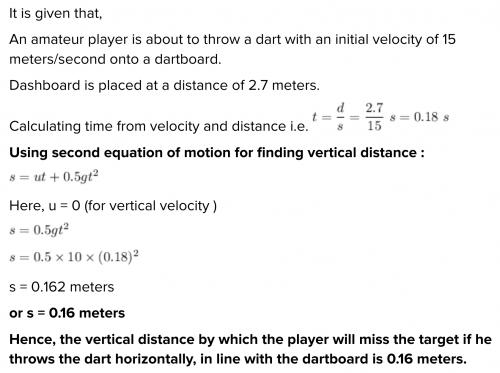 40
40 Hello Everyone here's all the answer for the assignments of Types of Tissue
Part 1
cartilage
bone
blood
fat
tendons
Part 2
cells
fibers
fluid matrix
salts
Part 3
esophagus
skin
blood vessels
organs
Part 4
striped
one nucleus
smaller than skeletal muscle cells
Part 5
spinal cord
brain
peripheral nerves
Part 6
Epithelia tissue is tightly packed, has a short life span and has regenerative properties.
The functions of epithelial tissue include absorption, secretion, protection, growth, and repair.
Part 7
Connective tissue is made up of fibrous layers of protein and has an extracellular matrix.
Connective tissue functions in support, binding storage, and the transport of nutrients.
Explanation:
Just took the assignment and got it all correct
from E D G E N U I T Y 2020
Hope this helps :D
 13
13  40
40 Hello Everyone here's all the answer for the assignments of Types of Tissue
Part 1
cartilage
bone
blood
fat
tendons
Part 2
cells
fibers
fluid matrix
salts
Part 3
esophagus
skin
blood vessels
organs
Part 4
striped
one nucleus
smaller than skeletal muscle cells
Part 5
spinal cord
brain
peripheral nerves
Part 6
Epithelia tissue is tightly packed, has a short life span and has regenerative properties.
The functions of epithelial tissue include absorption, secretion, protection, growth, and repair.
Part 7
Connective tissue is made up of fibrous layers of protein and has an extracellular matrix.
Connective tissue functions in support, binding storage, and the transport of nutrients.
Explanation:
Just took the assignment and got it all correct
from E D G E N U I T Y 2020
Hope this helps :D
 13
13  1
1  10
10 The human body is a complex system of organs, tissues, and muscles working together. The human heart is a type of muscular organ, which is involved in the pumping of blood and exchanging nutrients.
The circulatory system of humans is involved in transporting nutrients, oxygen, and other substances. The human heart pumps blood that carries these nutrients to different parts of the body. The circulatory system is involved in the transportation of blood to the heart and different parts of the body.
The electrical system of the body is required for the beating of the heart. If the heart would not beat, then the blood would not be pumped and the human will not be able to survive. Thus, the beating of the heart is involuntary.
Thus, the human heart is controlled by an electrical system and a circulatory system, which works in coordination to pump blood.
To know more about the human system, refer to the following link:
link

Independent variable: the best method to get rid of them.
Dependent variable: washing with soap and water.
Hypothesis: Organic oils
Control group: water
Answer:
see below.Step-by-step explanation:
To solve this problem, we can use the conservation of energy and conservation of momentum principles.
Conservation of energy:
The total initial energy is the rest energy of the proton and neutron, which is given by:
Ei = (mp + mn)c^2
where mp and mn are the masses of the proton and neutron, respectively, and c is the speed of light.
The total final energy is the rest energy of the deuteron plus the energy of the gamma ray, which is given by:
Ef = (md)c^2 + Eg
where md is the mass of the deuteron and Eg is the energy of the gamma ray.
According to the conservation of energy principle, the initial energy and final energy must be equal, so we have:
Ei = Ef
(mp + mn)c^2 = (md)c^2 + Eg
Conservation of momentum:
The total initial momentum is zero because the proton and neutron are at rest. The total final momentum is the momentum of the deuteron and the momentum of the gamma ray. Since the gamma ray is massless, its momentum is given by:
pg = Eg/c
where pg is the momentum of the gamma ray.
According to the conservation of momentum principle, the total final momentum must be equal to zero, so we have:
0 = pd + pg
where pd is the momentum of the deuteron.
Solving for md and pd:
From the conservation of energy equation, we can solve for md:
md = (mp + mn - Eg/c^2)/c^2
Substituting this expression into the conservation of momentum equation, we get:
pd = -pg = -Eg/c
Substituting the given values, we have:
mp = 1.6726 × 10^-27 kg mn = 1.6749 × 10^-27 kg Eg = 2.2 × 10^6 eV = 3.52 × 10^-13 J
Using c = 2.998 × 10^8 m/s, we get:
md = (1.6726 × 10^-27 kg + 1.6749 × 10^-27 kg - 3.52 × 10^-13 J/(2.998 × 10^8 m/s)^2)/(2.998 × 10^8 m/s)^2 = 3.3435 × 10^-27 kg
pd = -Eg/c = -(3.52 × 10^-13 J)/(2.998 × 10^8 m/s) = -1.1723 × 10^-21 kg·m/s
Therefore, the mass of the deuteron is 3.3435 × 10^-27 kg, and its momentum is -1.1723 × 10^-21 kg·m/s.
 1
1 The question specifies the diameter of the screw, therefore the IMA of this screw is 0.812? / 0.318 = 8.02

It will provide an instant answer!
